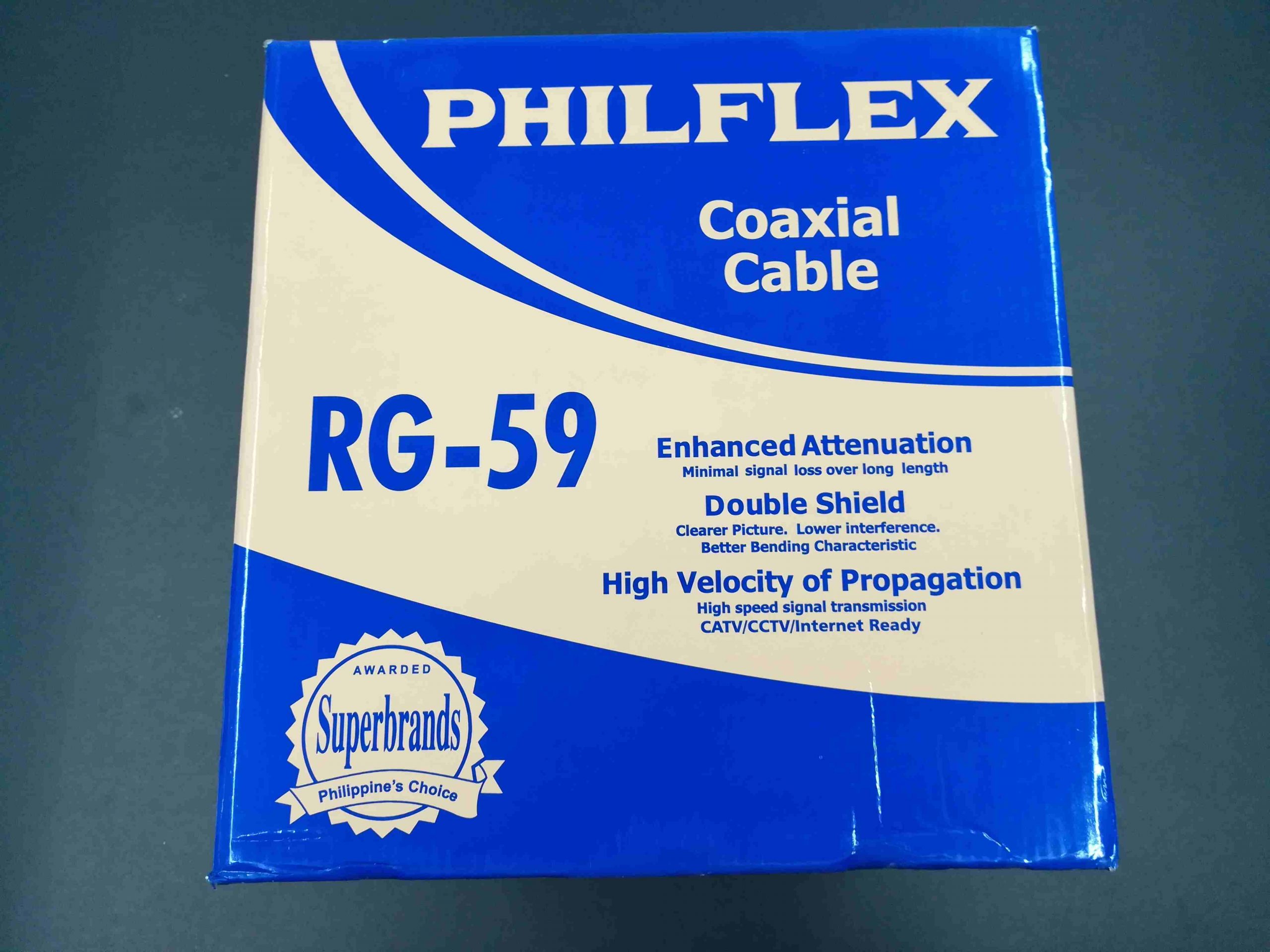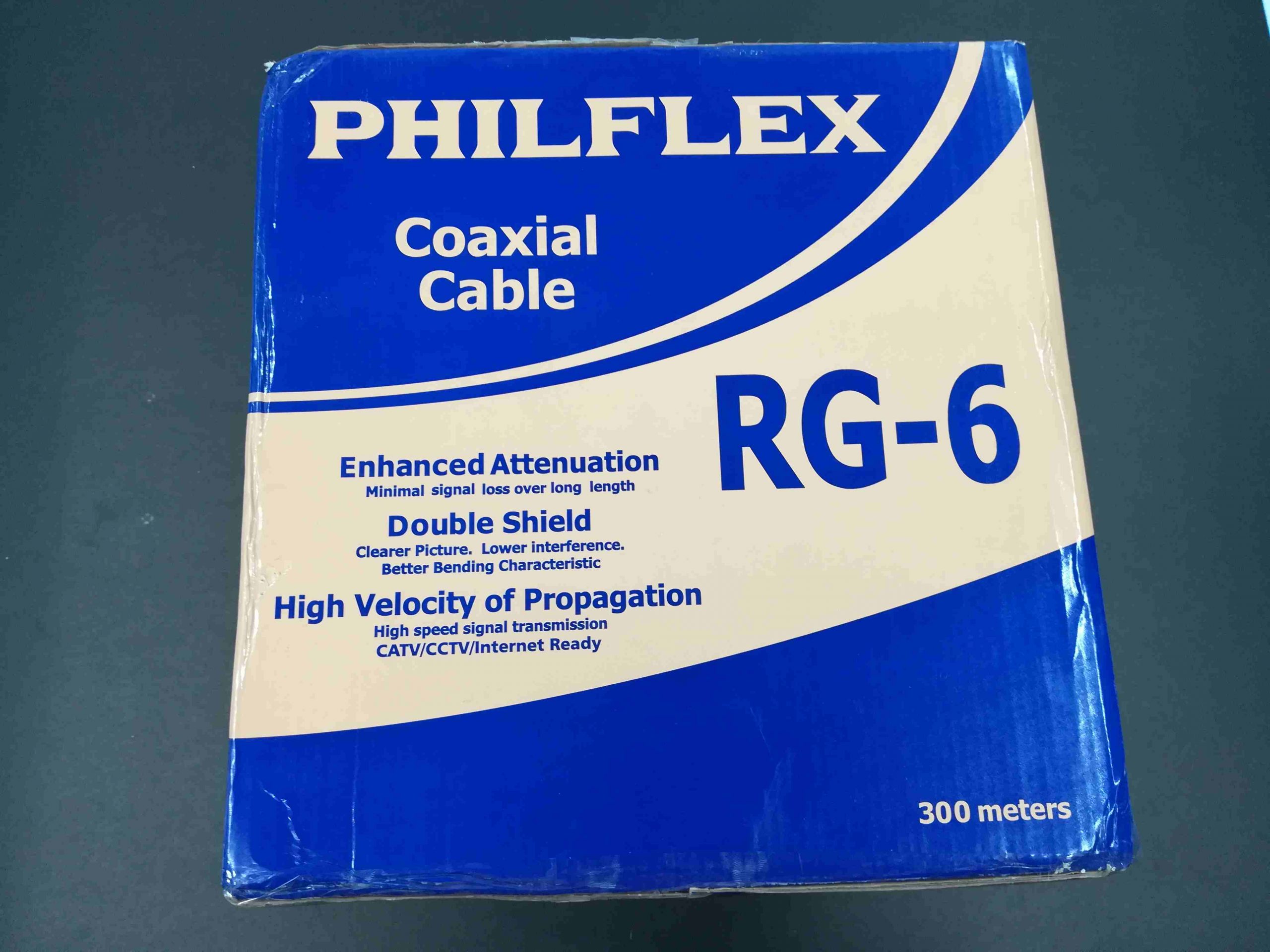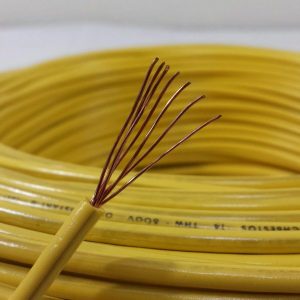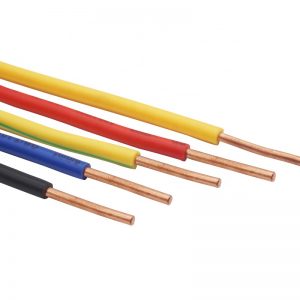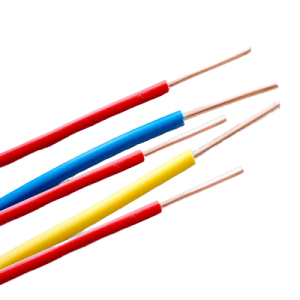| PRODUCT NAME | PRODUCT DESCRIPTION | UNIT of MEASUREMENT |
| RG-6 Coaxial Cable | Enhance Attenuation | 300 meters per roll |
| Double Shield | ||
| High Velocity of Propagation | ||
| Gauge 20 | ||
| RG-59 Coaxial Cable | Enhance Attenuation | 300 meters per roll |
| Double Shield | ||
| High Velocity of Propagation | ||
| Gauge 22 |
Coaxial Cable RG6 RG59
₱1.00
Coaxial cable is a type of transmission line, used to carry high frequency electrical signals with low losses. It is used in such applications as telephone trunklines, broadband internet networking cables, high speed computer data busses, cable television signals, and connecting radio transmitters and receivers to their antennas. It differs from other shielded cables because the dimensions of the cable and connectors are controlled to give a precise, constant conductor spacing, which is needed for it to function efficiently as a transmission line.
Coaxial cable was used in the first (1858) and following transatlantic cable installations, but its theory wasn’t described until 1880 by English physicist, engineer, and mathematician Oliver Heaviside, who patented the design in that year (British patent No. 1,407).
Coaxial cable conducts electrical signal using an inner conductor (usually a solid copper, stranded copper or copper plated steel wire) surrounded by an insulating layer and all enclosed by a shield, typically one to four layers of woven metallic braid and metallic tape. The cable is protected by an outer insulating jacket. Normally, the outside of the shield is kept at ground potential and a signal carrying voltage is applied to the center conductor. The advantage of coaxial design is that with differential mode, equal push-pull currents on the inner and outer conductors, the signal’s electric and magnetic fields are restricted to the dielectric, with little leakage outside the shield. Further, electric and magnetic fields outside the cable are largely kept from interfering with signals inside the cable, if unequal currents are filtered out at the receiving end of the line. This property makes coaxial cable a good choice both for carrying weak signals, that cannot tolerate interference from the environment, and for stronger electrical signals, that must not be allowed to radiate or couple into adjacent structures or circuits.[2] Larger diameter cables and cables with multiple shields have less leakage.
Common applications of coaxial cable include video and CATV distribution, RF and microwave transmission, and computer and instrumentation data connections.[3]
The characteristic impedance of the cable is determined by the dielectric constant of the inner insulator and the radii of the inner and outer conductors. In radio frequency systems, where the cable length is comparable to the wavelength of the signals transmitted, a uniform cable characteristic impedance is important to minimize loss. The source and load impedances are chosen to match the impedance of the cable to ensure maximum power transfer and minimum standing wave ratio. Other important properties of coaxial cable include attenuation as a function of frequency, voltage handling capability, and shield quality.
WE ARE HERE TO ASSIST YOU
| Available Sizes | RG-6 Gauge 20, RG-59 Gauge 22 |
|---|



